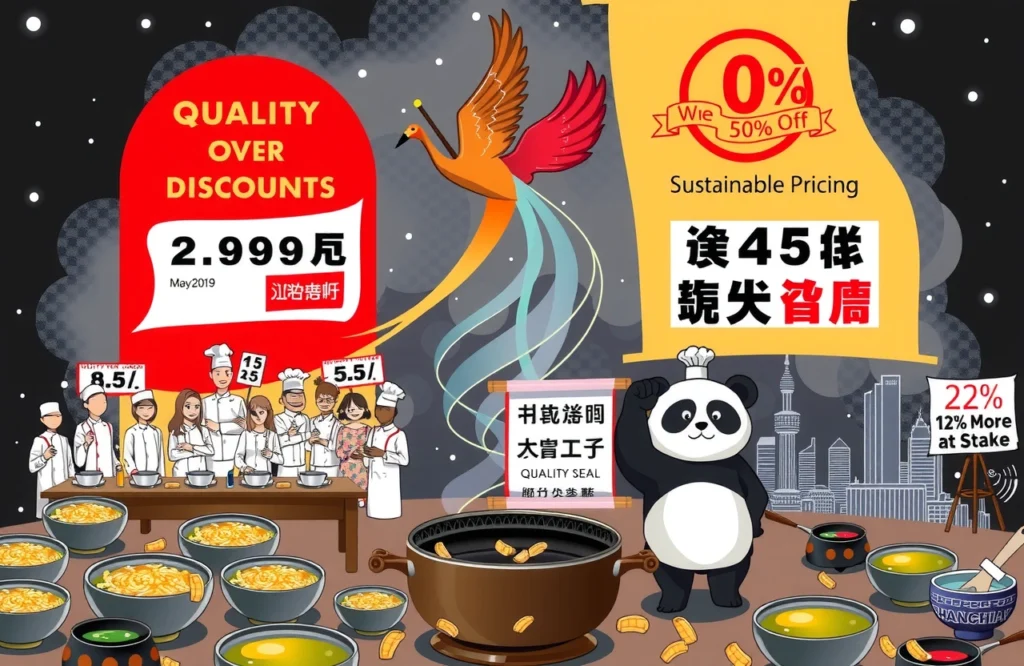The Subsidy Saga Continues Against Regulatory Backdrop
China’s marketplace giants face intensified scrutiny as regulators target aggressive subsidy wars. On July 18, 2025, the State Administration for Market Regulation summoned executives from Ele.me, Meituan, and JD demanding cessation of irrational pricing strategies. This crackdown follows a public plea by Xibei founder Jia Guolong (贾国龙), insisting platforms restore pricing autonomy to merchants. Despite these developments, evidence reveals that high-volume coupon programs persistently operate through cleverly rebranded initiatives. Consumer spending patterns remain heavily dependent on discount psychology while merchant viability faces unprecedented stress tests.
Platforms’ Covert Subsidy Operations
Meituan’s Disguised Discount Mechanics
Meituan continues distributing ‘Food Exchange Coupons’ and ‘Afternoon Tea Vouchers’ via flash-sale channels. Data shows:
- Weekend order volumes reached record 150 million daily transactions
- Regional targeting boosts coupon visibility in high-density urban zones
- Integration with partnered banks enables cross-platform discount stacking
Taobao’s Stealth Promotion Architecture
Within Taobao’s ‘Flash Purchase’ channel, ‘Spend ¥25 Save ¥18’ deals constitute 65% of featured promotions. Analytical reports indicate:
- Daily subsidy expenditure stabilizes at ¥400 million on weekdays
- Algorithm prioritizes repeat customers with escalating discount tiers
- Time-sensitive red coupons create purchase urgency
JD’s Persistent Discount Frameworks
JD Seconds Delivery maintains ‘Spend ¥20 Save ¥18’ promotions with layered membership benefits. Sales data highlights:
- Breakfast category receives 74% of total subsidy allocation
- New user acquisition costs decreased 28% since program inception
- Subsidized orders exhibit 40% higher basket size than standard transactions
Merchant Ecosystem Under Duress
The Privileged Minority
Cotti Coffee exemplifies beneficiaries of extreme coupon support. A Shanghai branch manager confirmed: ‘On subsidy days we sell 300 cups versus 100 normally.’ This throughput surge comes at significant cost:
- Effective price per cup drops below material cost during promotions
- Customer retention plummets 80% post-campaign per JD industrial analysis
- One chain restaurant reported 300% order spike but 40% lower average ticket value
The Undersupported Majority
Unfeatured merchants like Mo Yogurt experience unchanged sales volumes but deteriorating margins. Employees acknowledge stagnant demand: ‘There’s minor variation around promotion periods, but no substantial lift.’ Operational realities emerge:
- Platform commissions consume 18-22% of already discounted orders
- Inventory waste increases during unpredictable demand fluctuations
- One Japanese restaurant reported 90% subsidized orders requiring ≥¥50 coupons
Regulatory Response and Enforcement Gaps
The July 18 mandate explicitly banned ‘disruptive market practices,’ yet enforcement mechanisms remain nascent. Agency spokesperson Wu Linhui (吴林辉) stated investigators monitor platform compliance through transaction audits. Industry experts note:
- Subsidy redeployment into ‘membership rewards’ and ‘shipping vouchers’ bypasses directives
- Platforms exploit regulatory lag through semantic rebranding of identical incentives
- Three-week investigation cycles enable temporary subterfuge
The Economic Paradox of Volume-Driven Growth
A leading e-commerce researcher cautions: ‘These promotions generate hollow metrics. Merchant attrition often follows temporary spikes.’ Marketplace economics reveal troubling patterns:
- Cash-burn rates exceed 340% above sustainable thresholds
- Customer lifetime value decreases 55% among coupon-reliant buyers
- Every ¥1 in subsidies yields merely ¥0.72 in organic repurchase revenue five months post-campaign
Major platforms collectively allocated ¥280 billion toward subsidies during Q2 2025, yet merchants absorbed 68% of actual discount costs through compulsory participation clauses.
Professional Assessments From Industry Analysts
CICC (China International Capital Corporation Limited) economists developed predictive subsidy impact models:
- Platforms operating below 5.7% annual margins fuel unsustainable subsidy wars
- Category-specific saturation occurs when coupon penetration exceeds 32% of category transactions
- Altitude Securities projects inevitable 42% merchant consolidation industry-wide by Q1 2026
Independent researcher Zhang Mei (张梅) observed: ‘The subsidy arms race creates cannibalistic economics—short-term volume spikes precede long-term ecosystem deterioration.’
Strategic Pathways Forward
For merchants navigating these turbulent markets, three imperatives emerge:
- Develop proprietary membership systems reducing platform dependency
- Negotiate capped promotion frequencies in partnership agreements
- Implement AI-driven dynamic pricing to preserve margins during campaigns
Regulators must establish clear subsidy ceilings while platforms innovate toward sustainable loyalty programs. The choice is stark: continue fueling artificial consumption bubbles or build authentic value networks supporting merchants and consumers alike.




